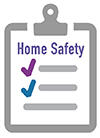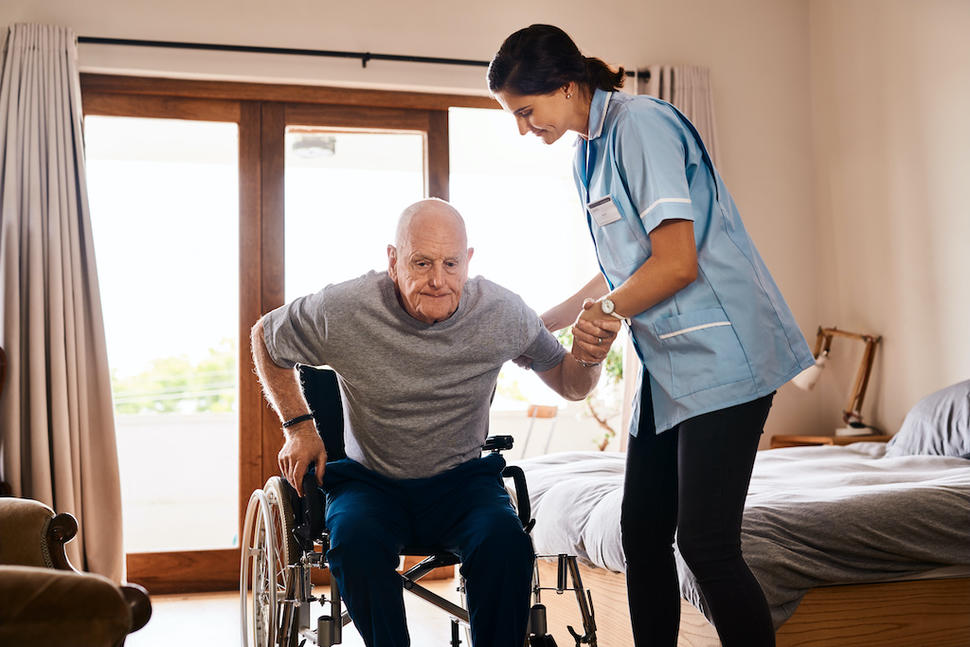What Is Weakness?
Weakness is a loss of muscle strength that affects your movement or activity. It is commonly caused by brain tumors located in the frontal lobes or the brainstem. Weakness can also be caused by treatment-associated swelling or an injury to the brain.
People with brain tumors can experience weakness on one side of the body or weakness in the hip muscles from corticosteroids, a commonly prescribed medication. Ask your health care professional about weakness—and if your weakness is permanent or may improve—so you know what to expect.
Weakness may include the following symptoms:
- In your legs or hips: a decreased range of motion, feeling off balance, trouble walking, or an increase in accidents or falls
- In your arms or shoulders: trouble picking things up, holding things, or performing daily tasks
- On your face: droopy eyelids, difficulty closing one or both eyes, double vision, or trouble swallowing or breathing
- In areas with weakness: pain, cramping, numbness, tingling, or sensitivity to cold/heat or touch
Ways to Manage Weakness
There are many ways you can manage and cope with weakness:
- Keep a daily log of your weakness and what you are doing to manage it using the My STORITM app or a journal.
- Take precautions to avoid falls, including:
- Being careful when performing household tasks and handling sharp or hot objects
- Bending at the knees—not at your waist—when lifting or carrying items
- Being careful on stairs and always using handrails
- Installing non-skid surfaces in the bathtub, shower, and other slippery spots
- Removing throw rugs and mats, and clearing walkways of extra furniture
- Ensuring your room is well lit so you can see where your feet are
- Ask your health care provider if assistive devices, such as canes and walkers, would help your balance. Orthopedic shoes or gloves may also help protect your hands and feet from injury.
- Ask your health care provider if ordering a home safety evaluation would help you understand the modifications needed to maintain your safety. For example, setting up your living area on one floor so you don’t have to use the stairs, adding handrails or ramps, and moving furniture to allow space for assistive devices.
- Ask your health care provider what medication or supplements are appropriate for you and what side effects you may experience with the weakness you have. Your health care provider may prescribe corticosteroids to reduce your weakness if it's related to swelling in the brain.
- Explore self-care activities that can help you cope with and improve weakness, including diet, exercise, and sleep:
- Talk to your health care team before starting any exercises to determine what exercise is right for you and if you need to exercise with a partner. Start slow and don’t push yourself too hard.
- Talk with your health care provider about massage therapy or acupuncture. Ask about physical or occupational therapy, which can strengthen, fix, or make up for weakness and maximize independence. These therapists will also help with your range of motion, make suggestions for environmental changes, and provide assistive devices.
- Ensure you are well rested. It is common for your weakness to be more severe when you are fatigued or don’t get enough sleep.
- Ask for help from others when you need it.
Home Safety Checklist
If you are experiencing weakness, use this safety checklist to make your home safe. Download the checklist >

When to Report Weakness
Discuss any concerns with your doctor. Share the symptoms you’ve logged and your self-care activities.
- Ask your doctor when and how to report your symptoms.
- Contact your doctor if your weakness gets worse over days or weeks. It is common for weakness to fluctuate during the day. It may be better when you first get up and worse during the day with activity.
- Let your care team know if you notice increasing weakness in your hips or difficulty standing when you are taking corticosteroids.
- Ask your doctor what you should do in case of an emergency and when your weakness should be reported immediately. Symptoms may include sudden worsening of your weakness, weakness in another area of your body, or swelling.
